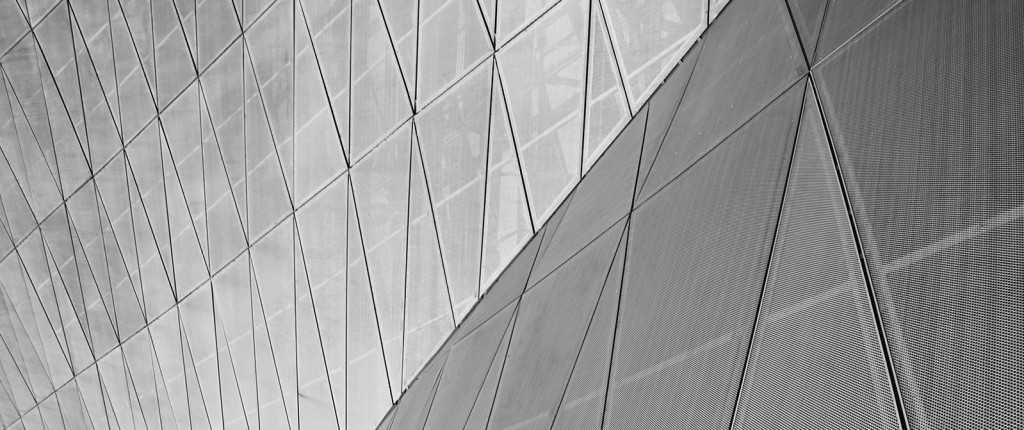
The project was a part of the many explorations done during the Algorithmic Geometric Optimization seminar of the Artificial Intelligence in Architecture module of the MACAD program. The aim of the exercise was to arrive at a form and to optimize the discretization of the geometry into developable parts and to fabricate a prototype by taking advantage of the optimization strategies. We started off experimenting with a structurally unstable form, to test our mesh stripper algorithm, followed by a Gyroid, build through a mathematical expression, which consisted of many organic naked edges. So we simplified our form to a mesh that could be structurally stable and have simple naked edges.

Mesh smoothening
The initial mesh was generated and smoothed out to form the geometry which was more stable and the curvature and naked edges provideed more structural support.
 The quad mesh generated had 1842 mesh faces.
The quad mesh generated had 1842 mesh faces.
METHODS
We then converted the mesh into a mesh graph and then used network x library and used different methods for discretization :
- K Means Clustering
- Dijkstra Shortest Path (QuadMesh)
- Dijkstra Shortest Path (TriMesh)
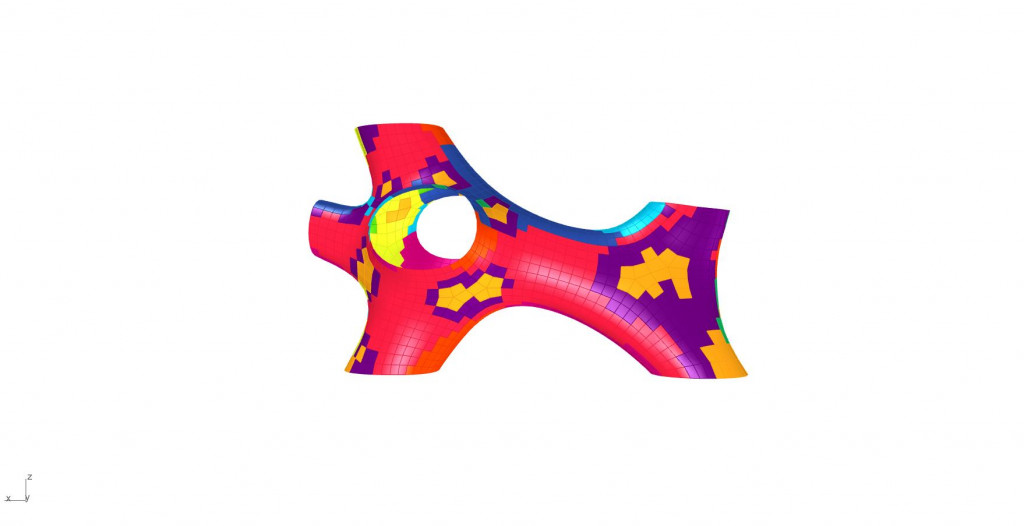 K Means Clustering | Clustering based on Mesh Face | Normal Angle Difference | K : 10
K Means Clustering | Clustering based on Mesh Face | Normal Angle Difference | K : 10
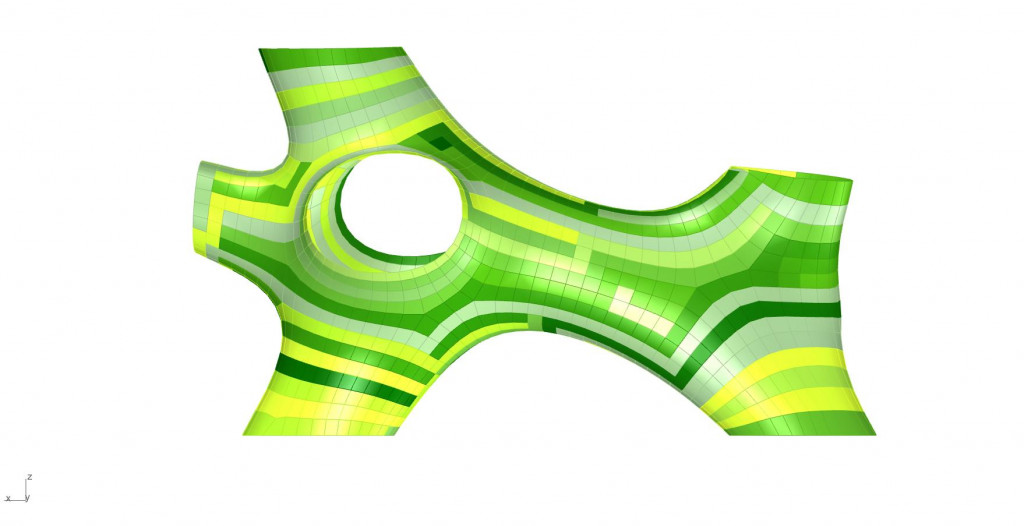
QuadMesh Strips | Strips based on longest shortest path | Number of Strips :72
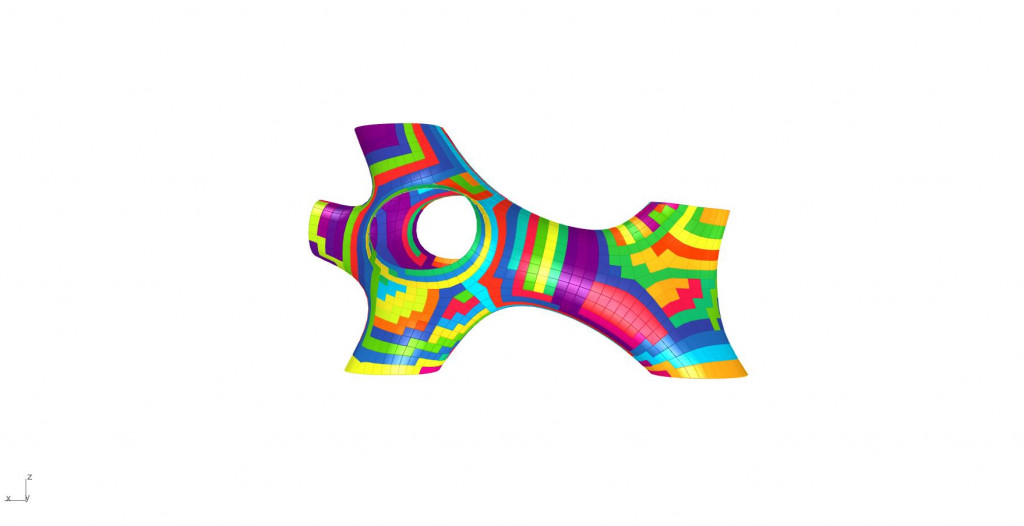
QuadMesh Strips | Strips based on longest shortest path | Weights :Mesh Face Height | Number of Strips :74
Reduce Resolution

Mesh faces : 345 | Number of Vertices : 193
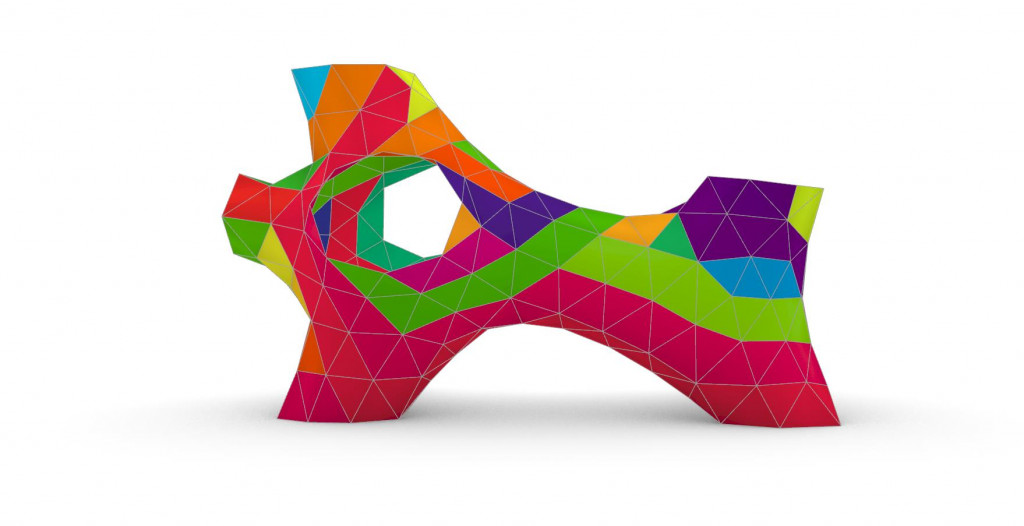
TriMesh Strips | Strips based on longest shortest path. | Strip Length Limited | Weights : Mesh Face Height | Number of Strips :34
FABRICATION

A portion of the geometry was curated to test our fabrication process. This section of the geometry was dismantled into 40 stripped pieces. The parts were Laser cut on a A2 Black file cardboard. The rigidity of the material was not estimated.
Glue, tape staplers were used to properly join the flaps at all the edges. The strips were segregated in a way that the fabrication started from bottom and moved to the top. The model was segregated into 4 main clusters.
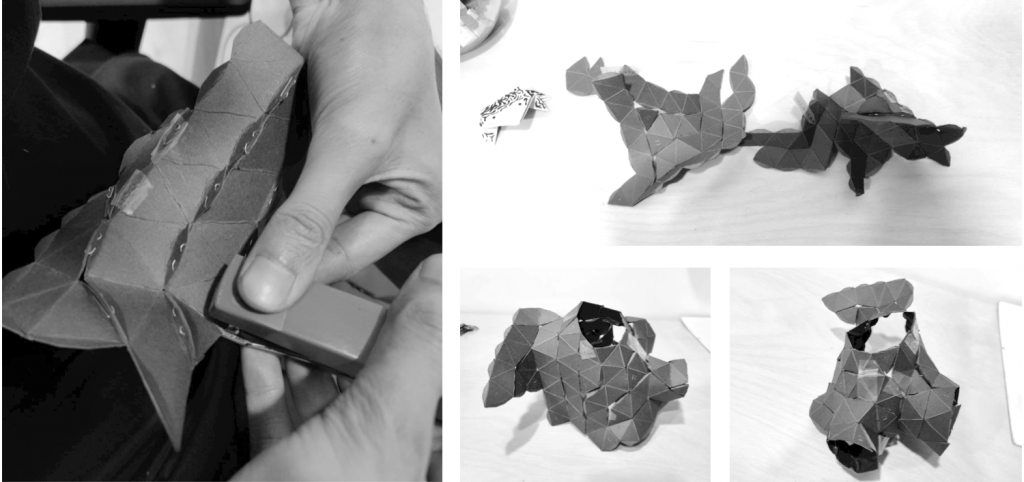
Fabrication of complex geometry based on available resources for rapid prototyping:

CREDITS
Geo.opt: GPII is a project of IAAC, Institute for Advanced Architecture of Catalonia developed at Master in Advanced Computation for Architecture & Design in 2020/21 by
Students: Krishnanunni Vijayakumar and Varun Mehta
Faculty: David Andres Leon and Dai Kandil
